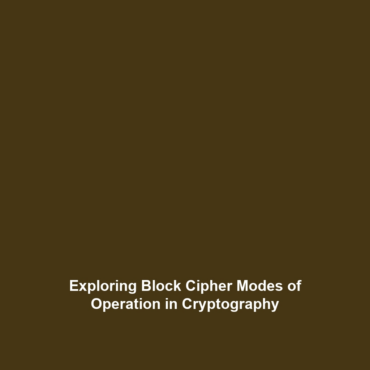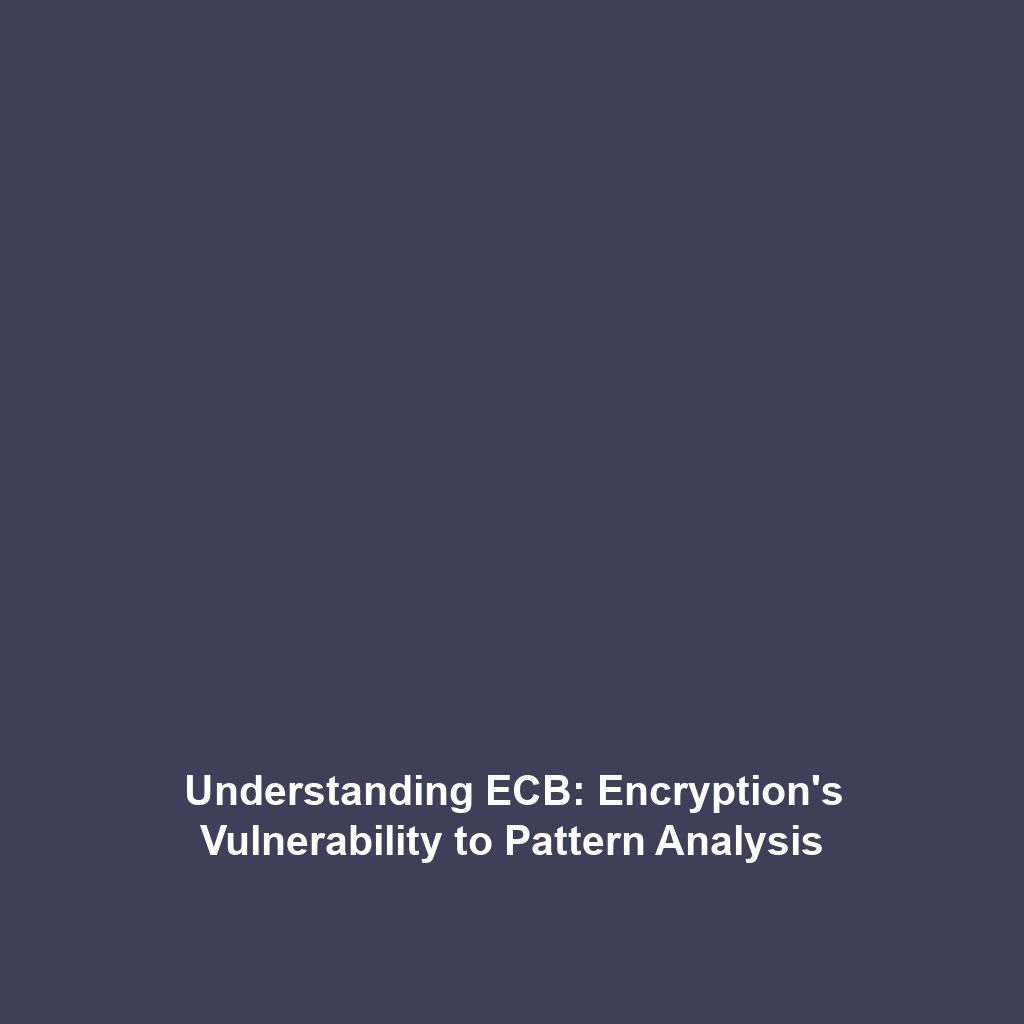Modes of Operation for Block Ciphers
Introduction
Modes of Operation for Block Ciphers are critical components of modern cryptography, enabling secure data encryption and transmission. They define how a block cipher processes input data, transforming it into ciphertext using a fixed-size block. Understanding these modes is essential for anyone involved in information security, as they impact the effectiveness and security of encryption methodologies. This article delves into the significance of these modes, exploring the varying approaches and their applications in the broader context of cryptography.
Key Concepts
To appreciate the functionality of Modes of Operation for Block Ciphers, it’s important to grasp several key concepts:
Block Ciphers
Block ciphers are encryption algorithms that operate on fixed-size blocks of data. When dealing with larger messages, these ciphers must be applied multiple times, necessitating a mode of operation to determine how the blocks interact.
Modes of Operation
There are several prominent modes of operation, each designed to provide different security properties and performance characteristics:
- Electronic Codebook (ECB): Simplest mode, where plaintext is divided into blocks and each block is encrypted separately. However, susceptibility to pattern analysis makes it less secure for most applications.
- Cipher Block Chaining (CBC): Enhances security by linking blocks, where the previous ciphertext block influences the encryption of the current block. This reduces pattern exposure.
- Output Feedback (OFB) and Cipher Feedback (CFB): These modes transform block ciphers into stream ciphers, allowing encryption of messages of arbitrary lengths.
Applications and Real-World Uses
Modes of operation for block ciphers have widespread applications in various fields, showcasing their importance in cryptography:
- Secure Communications: Used extensively in secure messaging platforms, ensuring that messages remain confidential and tamper-proof.
- Data Storage Security: Implemented in disk encryption solutions to protect sensitive information on physical storage devices.
- Financial Transactions: Critical in securing online banking and e-commerce operations, where sensitive financial data is transmitted.
Current Challenges
Despite their importance, the study and application of Modes of Operation for Block Ciphers face several challenges:
- Security Vulnerabilities: Certain modes, like ECB, are notoriously weak against cryptanalysis, highlighting the need for choosing appropriate modes.
- Performance Issues: Some modes introduce latency, affecting real-time applications; thus, a trade-off between security and performance is often required.
- Complexity of Implementation: Correctly implementing modes can be challenging, increasing the risk of introducing vulnerabilities.
Future Research and Innovations
Future research in this domain is focused on enhancing the efficiency and security of Modes of Operation for Block Ciphers. Innovations include:
- Post-Quantum Cryptography: Research is underway to develop new modes that can withstand the eventual rise of quantum computing threats.
- Adaptation to New Attacks: Ongoing studies aim to refine existing modes to address vulnerabilities identified through modern cryptanalysis methods.
- Integration with Emerging Technologies: Development of hybrid systems combining different modes to improve both security and performance.
Conclusion
Modes of Operation for Block Ciphers play a vital role in the realm of cryptography, influencing how securely data is encrypted and transmitted. As technology advances, the relevance of these modes continues to grow, necessitating ongoing research and innovation. For those in the field, understanding these mechanisms is critical for developing secure systems. Explore more about block ciphers and encryption methods to further deepen your knowledge.

